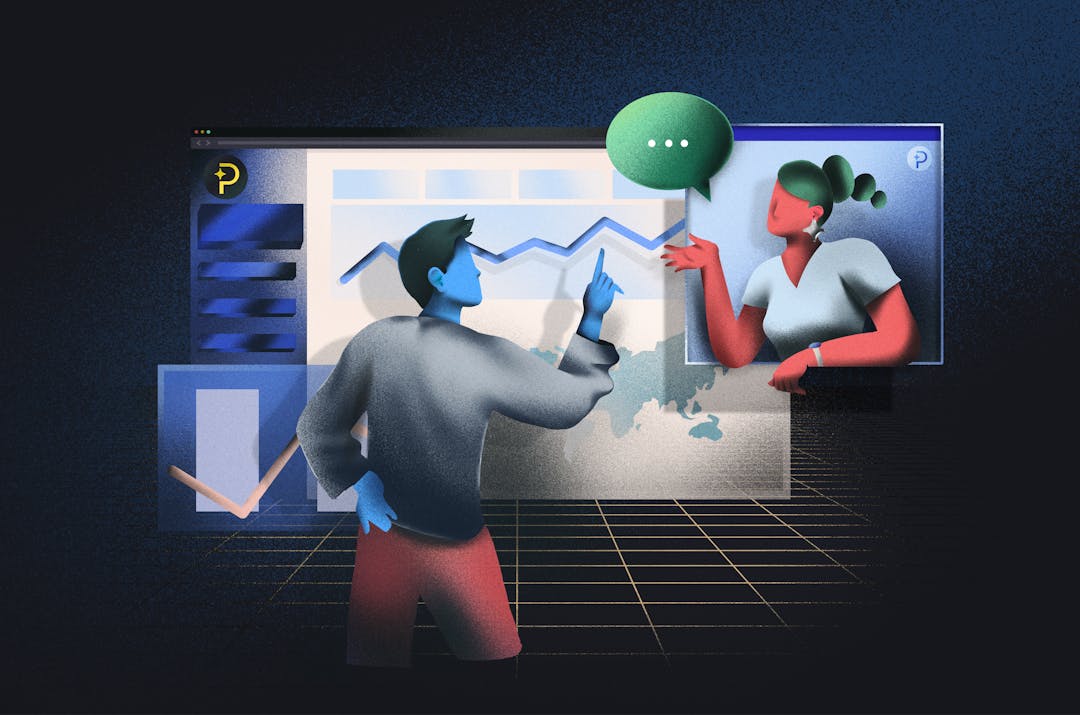Customer acquisition vs. customer retention—which one is better? That's actually a misleading question: both are important for sustainability and growth in their own way.
Nevertheless, many companies focus the majority of their time and resources on acquisition. Efforts to improve retention are often put on the back burner, or totally neglected. In reality, though, retention offers a much higher ROI on advertising spend for certain business models—and is often much more cost-effective than its counterpart.
Which aspect of marketing should you focus on? Let's dive into the details of customer acquisition and retention, and see if we can answer that question.
What is customer acquisition?
Put simply, customer acquisition is the process of gaining new customers. It involves attracting prospects to your business, and then persuading them to buy your product or service.
What is customer retention?
Customer retention is the process and ability of a company to keep its customers over a period of time. It involves keeping customers active and happy users of your product or services.
How acquisition and retention drive growth
Acquisition and retention are like the two wings of a bird: if either one is missing, then flight becomes impossible. In the same way, you need to both acquire and then retain customers in order to achieve success in the subscription world.
Granted, acquisition and retention drive growth in different ways. For instance:
Acquisition grows your customer base
It's fairly obvious that without any customers to serve, there's no reason for a company to exist in the first place. You had to acquire at least a few customers in order to launch your business. Now, the ongoing process of customer acquisition allows you to grow your customer base and obtain even more opportunities to conduct business.
Retention grows customer lifetime value
A customer's lifetime value (CLV) is the projected value of that customer over the entire course of his relationship with your company. It's no secret that loyal customers who consistently purchase from your brand are almost always more valuable to your company than one-time buyers. A strong customer retention strategy enables you to maximize the lifetime value (LTV) of your customers by encouraging them to bring their business back to you, again and again.
Where are your dollars best spent: on acquisition or retention?
Any company, no matter how big, has limits to what they can spend on their marketing budget. For that reason, it's important to know which area will yield the biggest "bang for the buck"--customer acquisition or customer retention. What are some factors that you should consider when making this decision?
Acquisition is more expensive
Statistics vary from industry to industry, but research indicates that customer acquisition is a far more expensive venture than retention. In fact, it may cost up to 5 times more to acquire a new customer than to keep an existing one.
Why such a huge difference? When it comes to new customers, remember that you are basically starting from scratch. They likely have no previous experience with your brand, and may not even trust your company. It takes time and money to interest them in your product, and even more time and money to convince them to buy from you. With current customers, you don't have to fight against as many barriers to the transaction.
Retention has a better ROI
In many cases, the upfront costs of customer acquisition make many business-customer relationships unprofitable in the beginning. It may only be several months or even years later, with strong retention processes in place, that these relationships generate significant returns. In fact, one study found that a 5% increase in retention rates may lead to a profit increase of up to 95%.
The point is that a customer becomes more valuable over time—and a robust retention strategy will enable you to keep your current customers for longer.
With Paddle's automated billing software, SaaS and digital product companies can access our world-class customer retention and churn prevention tools, including dunning management, term optimization and more.
Happier customers boost word of mouth
Word of mouth (WOM) marketing is one of the most effective forms of advertising. For example, one study found that 92% of global consumers trust the referral of a friend, family member, or acquaintance over any form of corporate advertising.
When you retain current customers by delivering exceptional service and high quality results, they are more likely to be happy with the relationship; and when they are happy with the relationship, they are more likely to advocate for your company to others. In effect, your retention feeds into your acquisition--and you don't have to pay a dime for the positive publicity.
Most businesses only focus on customer acquisition. Here's why.
With all of the above information in mind, you may wonder why so many companies are obsessed with customer acquisition over everything else. There are several factors that contribute to this trend; however, two of the biggest motivators are:
Acquisition boosts vanity metrics
Customer acquisition campaigns often result in eye-popping numbers: more visitors on page, more daily active users, etc. Marketers can easily point to such stats as markers of success. However, as the name implies, vanity metrics look great on the surface—but they don't provide any actionable insights into future strategy.
The results of acquisition campaigns are more quickly evident
Customer retention is a long-term process, with results that may take years to come to fruition. In contrast, acquisition campaigns offer quick and easy measurements of success. For example, "new users" is a simple metric that can be seen immediately. Basically, many companies use customer acquisition campaigns as the marketing equivalent of "instant gratification," without pausing to consider if they really constitute the best use of funds.
Should my business focus on acquisition or retention?
There's no cookie cutter answer to this question. Each company is different, and has unique needs, objectives, and circumstances. Businesses that depend on large, one-time customer purchases more than repeat transactions may be better served by focusing on acquisition initiatives. On the other hand, there are many situations in which retention should be the higher priority.
SaaS businesses are usually better served focusing on retention
Many SaaS companies depend on subscription fees and other forms of repeat business as their main source of revenue. One study found that 65% of a company's business comes from existing customers, and that statistic applies with even greater force to the SaaS industry than to other sectors. Logically, SaaS businesses that have to choose between acquisition and retention should focus the bulk of their efforts on keeping current users.
If your budget is very constrained, focus on retention
As mentioned previously, customer retention yields a higher ROI on marketing spend. While acquisition is important for long-term growth, the initial costs associated with getting new customers may be too high for your company if you're operating within a tight budget.
Ideally, you will equally prioritize both
All things being equal, every business should focus on both acquisition and retention at the same time. Ultimately, they are two sides of the same coin: in order to successfully grow your business, you must acquire a steady stream of new customers without losing existing ones.
If you develop a realistic marketing strategy that incorporates initiatives for both customer acquisition and customer retention, and then execute that strategy with the resources you have at hand, you'll likely enjoy steady and sustainable growth in the near future, and for years to come.
Get the SaaS billing solution that manages tax, payments and compliance for you, so you can both retain and acquire new customers. Sign up here.




